
Vijay Iyer
Reflections of Reality
by Anil Prasad
Copyright © 2008 Anil Prasad.
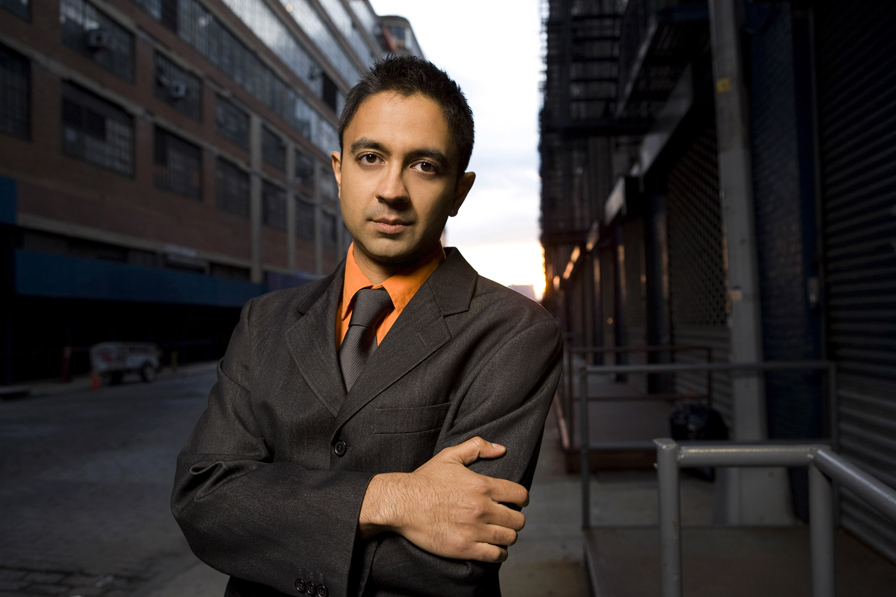
Pianist, composer, and sonic conceptualist Vijay Iyer is unafraid of having his music reflect the turmoil of today's world. And he's equally undaunted about ensuring his listeners are aware of that fact. Iyer offers up forthright commentary via the construction and emotional content of his music, as well as through its accompanying album and track titles. It's rare today for a musician of his status and profile, particularly one who largely works within an instrumental context, to overtly acknowledge that his music represents specific concerns and viewpoints. Having said that, Iyer’s music serves as a series of guideposts. It’s up to the listener to expand on its intent.
His perspectives are highlighted on two new CDs, Tragicomic, released under his own name, and Door, a new trio disc by Fieldwork that also features saxophonist Steve Lehman and drummer Tyshawn Sorey. Tragicomic is an expansive effort that finds Iyer in quartet, trio, and solo formats, featuring combinations of his core band comprising saxophonist Rudresh Mahanthappa, bassist Stephan Crump, and drummer Marcus Gilmore.
With Door, Iyer stretches his collaborative muscles as part of a unique ensemble dedicated to innovative, evocative ideas within the jazz spectrum. The album offers compositions from each member, amplified and transformed via the group’s inventive, exploratory leanings. It’s a difficult-to-categorize disc that includes elements from myriad genres without the burden of being tied to any of them. Funk-infused interludes, moments of dissonance, hip-hop beats, ambient atmospheres, contrapuntal explorations, Indian and African influences, and even classical references figure into the mix. The only way to understand it is to hear it.
Another key, relatively recent effort featuring Iyer is Still Life with Commentator, a 2007 collaboration with progressive hip-hop luminary and poet Mike Ladd, and conceptual artist Ibrahim Quraishi. It’s a follow-up to 2004’s In What Language?, Iyer’s previous musically kaleidoscopic release with Ladd which explored the stereotypes and perceptions that color the lives of brown-skinned people in a post-9/11 universe.
Still Life tackles ambitious territory as a modern oratorio that serves to dissect and question today’s Internet- and media-dominated communications discourse and whether it is enhancing or undermining societal structures. In particular, the piece offers pointed observations about the ways war is contextualized by the various strands of today’s modern news delivery mechanisms. Musically, the piece is underpinned by piano, keyboards, cello, fractured beatscapes, and imaginative guitar treatments.
Innerviews hooked up with Iyer after a performance of Still Life with Commentator at Stanford University in Palo Alto, California. Unlike previous theatrical versions of the performance featuring a multi-leveled stage, actors, dancers, and expansive multimedia components, the Stanford show focused exclusively on the music, leaving the audience to conjure up a personal response to its provocative subject matter.
You’ve been living and breathing Still Life with Commentator for three years. What was it like to revisit it in America’s current political climate?
It was interesting to bring it back in 2008. The last time we performed it was the middle of 2007 and a lot has happened since. The project was created during the first half of 2006 and subsequently refined. It was initiated at a time when there was no end in sight in terms of the Iraq war and right wing domination of political discourse. Those things have changed in recent months, so you start to feel like maybe we’ll somehow be okay after all this. [laughs] But that could be an illusion. There’s so much to undo before we can feel like we’re back where we started. A lot of damage has been wreaked on our system in the last two presidential terms. A lot of stuff was already in motion before too.
The work was mostly about addressing our relationship to media technology and how it has redefined our relationship to reality. The content is still as vivid and true as ever. Still Life with Commentator was a way to propose a new relationship that we might have with these technologies. The act of making a creative work about it brings it into relief or focus as something worth rethinking, reconsidering, or criticizing. At the same time, it’s just such a part of who we are now. Many of us really define ourselves through these technologies to such an extent. And it’s not that we want to reject that reality, but the transformation happened so fast that we didn’t really have a chance to examine what it was doing to us. So, the project was trying to create a pause to examine the situation carefully and consider the emotional content of these shifts.
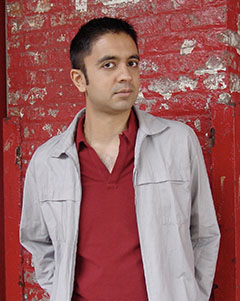
What impact do you feel music as social commentary can have on listeners?
It’s not something people are always open to. With this project, the response was a little underwhelming compared to other things I’ve done in the past. It was almost like there was so much to say and worry about that most people turn to art for solace and escape than they do for reactivation of those concerns. I think that’s more true in difficult times than it is during times of relative ease. I also find—and it’s been said by others—that if you look at the Billboard Hot 100 during the last five years, would you even know this country was at war? Is there any trace of it anywhere in popular music? There were a handful of movies that came out in 2007 that grappled with some of these subjects and the political realities we’re immersed in. They all tanked at the box office, but everyone involved patted themselves on the back for making them. It seems like that’s not what people want, especially in a culture where the marketplace rules for art have become a little strange. It seems there’s a limit to how much you’re really enabled to engage with these things. I’ve been able to live inside and outside the marketplace as an artist, and sometimes I get support from foundations to do different projects. But then the realities of when you create a commodity like a CD and want it to propagate through the world make you face these concerns.
Is there a call to action in Still Life with Commentator?
Not specifically. And it’s not like we wanted to tell everyone “Shit is fucked up.” [laughs] I think people know what’s happening. We wanted more to engage with people about the way technology can encourage us to forget important information. We also wanted to point to how technology is becoming a means of escape or a surrogate. There is a culture of people who are swept up in the blogosphere and television news which becomes a day-to-day storm that you have to weather. I admit that I partake in that culture and both Mike and I wanted to look closely at that to ask “What does this say about our relationship to reality? Has something been fundamentally altered to the point that we’re losing something?” We wanted to ask the questions, not provide concrete answers. These things have become omnipresent and we tell our stories through the lenses of media, including the news, blogs, MySpace, and YouTube. I don’t want to find fault with that reality, but see if there’s anything we’re changing about ourselves in this transition.
Discuss how you go about mapping your music to Ladd’s lyrics.
The way we work in general has been really organic. It’s a back-and-forth process in which we start with something that’s very loosely matched. For instance, he might send me a handful of poems or I might send him a handful of beats or small, short musical pieces. Then we’ll both live with these things, play mix-and-match with them, and begin reshaping them. Mike is an obsessive rewriter. He’ll rewrite entire poems from scratch and within the world of the music, I’ll do the same. I’ll live with a poem for awhile and try to come up with a musical response or environment for it to reside in. It’s also a very collaborative thing, not just between me and him, but also with the other performers in Still Life with Commentator, such as Pamela Z and Guillermo E. Brown, the other two featured vocalists, and Liberty Ellman and Okkyung Lee, the other musicians involved. So, a lot of the work came into being during group rehearsals. We’d all figure out a way to deal with these texts and deliver them within the context of the music we had. Some melodies needed to be dreamed up. Just about anywhere you hear singing had melodies that were improvised by all the performers involved. It was their human response to the necessity of the material they had in front of them.
Are you and Ladd working on new material?
We keep doing things together, including duo shows. We’re going to think small for the next project, but I can see us doing a lot more work. We both have kids who are a few months apart—mine recently turned three, and so did his. We’re joking about doing a children’s album under an alias. [laughs] Who knows? In the meantime, I want to get back to the purity of the sensation of performance without a lot of conceptual baggage. I find a lot of these questions and narratives get activated anyway during the course of creating these projects. When you have a project with a lot of scaffolding preceding it, conceptually and literally, as was the case for the set for the theatrical version of Still Life, you often find that you want more freedom and openness so the overarching meta-narratives resonate in ways you don’t foresee. I’d say our next projects will be a little looser, open-ended conceptually, but perhaps tighter in execution.
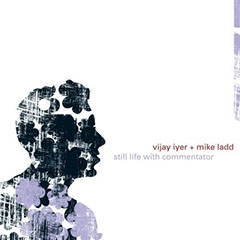
Contrast your personal creative process to how you work with Ladd.
Most of the time, I’m writing for an improvisatory context like a quartet, so I tend to write with that openness and possibility for collaboration in mind. It’s not that different in a way because I’m thinking about how to make space for people, but with the instrumental stuff, it’s not crafted in support of other narratives or text. It tends to be more about the playing of the music, in which the meaning is construed in how it’s played and the way it’s developed improvisationally. I think a lot about ways of orchestrating an ensemble and how to create openness for individual contributions within that space and ensemble texture. I also think about how to feature soloists. In addition, I try to create very tightly organized passages that allow for chaos as well. So, that’s the process I’m involved in for my own bands. I tend to focus mainly on rhythm first, because that’s the main organizing principle in my music.
Does the creative process typically begin with the piano for you or are there other tools involved?
It goes in a lot of different directions. I’ve played piano by ear for more than 30 years, even though I also read music. The reason I do that is I like the intimate connection between what I hear and what I play. That link has always been there. I find that when I’m creating, I want to reach beyond that. So, I don’t tend to start by noodling at the piano, because that’s going to keep me spiraling in the same area of what I already know. As an artist, I want to reach for something I don’t know.
I often use formal, compositional technique, which might involve writing numbers on paper and thinking about how to organize them in a way that articulates a span of time, and then filling those spans of time with materials based on other principles, which usually manifest themselves as constraints. I impose constraints so I can make clear and simple choices as a composer. So, I might start out with a rhythmic template, and then think about what the pitch world might be. A lot of these constraints or conceptual principles come from specific places. For instance, I’m very influenced by Indian Carnatic rhythms. I might think about Carnatic rhythmic cadence as an underlying form for a larger piece. So, using these things takes me away from the piano and my own habits on the instrument.
In 2007, you were commissioned to compose Interventions, an orchestral piece performed by the American Composers Orchestra. How did that stretch your compositional boundaries?
It was a fun process, and an interesting one because I wasn’t writing for improvisers, except in moments when I had a handful of members of the ensemble making decisions in real time. That is what improvising is, but they weren’t really drawing from a tradition of improvising. I wasn’t asking to them to play a blues solo or rhythm changes. I was asking them to choose between a handful of pitches and when to play for an extended length of time among those pitches. The idea was to provide them with some simple choices that could result in an emergent texture that I’m not controlling moment by moment. So, I’m giving them some agency in the process, but I’m not letting them run wild either. [laughs] For the most part, I was writing stuff in which it was okay for these people to just execute what I wrote. It’s like you’re creating a series of commands. In a way, it’s like writing code. [laughs] It was also interesting to me because I was a performer in the piece as well, so I didn’t really configure myself into it as a concerto-style soloist. Instead, I was someone who could weave in and out of the textures almost like a ghost in the machine.
I had played in orchestras, growing up as a violinist. Violin was my first instrument, so I had intimate experience with the inner workings of an orchestra. So that sound was in my ear. Then I had all of those conceptual things that I’m dealing with as a composer and improviser, so I had to find a way to marry those very different sides of myself. I also had to deal with the extreme infrastructure of an orchestra. It’s such a hierarchal system. The musicians are like laborers, basically. They’re also unionized. The conductor ends up being like the foreman or spokesperson. So, all my actions are mediated through him, including my verbal interactions. Everything had to go through the central office as it were. [laughs] It’s funny. I’m very much used to doing things on the fly and having things change in real time during rehearsals, and that wasn’t an option in this context.
Will a recording of Interventions emerge?
It was performed a couple of times in March and April of 2007 and the score still exists, so it could very well get played again. However, recording it is a prohibitively expensive enterprise. It’s not like I can call some people up and say “Hey, let’s make a record. It’s going to be an orchestra piece.” [laughs] We’ll see what happens.
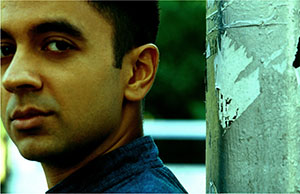
What are the biggest challenges you face as a musician today?
The difficulties in paying for recordings. [laughs] In terms of the record business, it’s such a different time, even compared to a few years ago. I have to be more creative in calling in a lot of favors to make albums. That’s the biggest challenge. In terms of making the music, it’s difficult to juggle everything to try and stay in the game, professionally, while staying on top of your music in terms of technique, creativity, and currency of ideas. Getting gigs, touring, and being a parent comprise a significant juggling act. In a way, the music becomes the easiest part, because it’s its own reward. It’s what I’ve always loved and what people dream of doing. The fact that I get to do it is kind of amazing. So, any challenges involved in putting notes together are dwarfed by the logistical challenges of keeping my professional career moving.
How do you avoid getting stuck in a groove so you can keep things fresh?
I have my obsessions and they’ve been recurring for a few years. I’d say aesthetically, I’m in transition in terms of what my fundamental tools are for putting together music. The last five years have had a certain consistency of approach and I’ve been fortunate to bring it to different situations and collaborative contexts in which it gets fleshed out in different ways by virtue of who’s involved. But I’m definitely trying to figure out what the next five, 10, or 15 years will hold for me, aesthetically speaking. The key is to find ideas that keep giving back to you. It’s not necessarily that you plan for them to last. However, there are certain things I’ve dealt with in recent years, like rhythmic formulas from South Indian music, that can serve as the substrate of larger forms.
I also enjoy working with polyrhythmic ideas from African music and dealing with ideas about the body and the hands and letting those guide me at the piano to generate material. This is where a lot of the arpeggiated stuff during the opening bars of Reimagining and In What Language? derived from. There’s a certain similarity of reference there, so that’s one ongoing idea that worked for me. Using arpeggiated kinds of gestures instead of chords created a different sense of counterpoint in the ensembles which I felt was more transparent and allowed for more interactivity. It also meant the piano could become a rhythmic, melodic, and harmonic entity all at once, which I liked. So, it’s stuff like that, which is included on Door and Tragicomic, that maybe I will be closing the chapter on. I’m looking for new situations in which I’ll be inspired to think differently about what I do.
Is there an evolutionary component to Tragicomic as well?
I think so. Some of that music is more than two years old. It took that long to get it on a record, but then some other stuff on it is more recent, created in September 2007 and recorded in October of the same year. So, it represents a span of time for me. I’m starting to think more as a player than a composer and trying to activate that side a little more and that’s represented on the CD. The performer intensity of playing the piano has become its own statement a little more. For example, I played a standard on the record called “I’m All Smiles,” a Broadway show tune done as a solo piano piece. I wanted to feature a certain aesthetic approach to playing in that vein. It’s more or less straightahead, but I’m using my harmonic vocabulary, which is something that’s accumulated over the years. So, I wanted to have something on the album where I’m using my language to play a song that a lot of people know.
There’s a lot of piano trio music on this new album that I’m starting to lean more towards too, because I like that configuration. It represents a tradition in and of itself. I think of Ahmad Jamal as one of the classic examples. He approaches the trio with a very structural direction, but it’s very improvisational and playerly. Yet the choices he makes, such as playing melodic fragments or cutting them short, leave huge gaps. Those are composerly choices in which he’s improvising with the tune, but you wouldn’t call it a soloistic approach. You might not call Bud Powell’s playing soloistic either, because there’s something conceptual going on, but it’s at the playerly level. Ahmad’s playing standards, but repurposing them and pointing them in different directions that are very spontaneous, fresh, and very real time. It’s like process music. When you see him play, you see this intricate system of cues. He’ll take a standard that everyone knows and cycle the bridge, the channel, and the last few bars of 32 bars and turn that into its own form, and then you start hearing the piece in a different way. He’s a great example for me. I’m starting to lean in that direction.
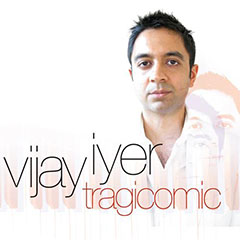
I assume the title Tragicomic was motivated by political intrigue.
[laughs] Yeah. A lot of that music was written a couple of years ago, but it still resonates for me emotionally. Whenever you create instrumental music, it’s so much about emotion, despite the intellectual and structural sides that I bring to it. At its core, it hits at a gut level before anything. I wanted to create an emotional portrait of what it means to be an American today in the music. So, that sensibility permeates the music and that idea was recently repurposed by Cornel West when he talked about the blues as an aesthetic that came out of a historical moment. The blues basically reflect Black America’s encounter with the absurd. Imagine African-Americans after emancipation. Suddenly, they find themselves in strange predicaments where they’re Americans after being seen as property. It’s a fundamentally absurd and cruel moment that gave rise to what we now call the blues. And that sensibility and aesthetic is about staring into that absurdity and finding hope somehow in the midst of it. I think we have everything to learn from that—all of us, regardless of what your connection to it is. Given where America is as a country, we have to now reimagine a new kind of future in the midst of a lot more bullshit. [laughs] So, that’s where we are at the moment.
How did you go about infusing those ideas into musical content?
It’s not so much that I set out to do this. It’s more that once I compiled this music together and heard ourselves playing it that I came to realize what it was about and that a specific sensibility was speaking through the music. I think it’s about how today resonates with the past and what our responsibility is to the future. We’re at a pivotal, transitional moment in history and it seemed like that’s what the music was about. So, at an intuitive level that idea worked for me. When you make instrumental music and put titles on it, you’re creating a pretty open experience, but trying to tip it in a certain direction between what the music does to you emotionally and what the open signifiers of titles might activate or suggest to the listener. So, all I can really hope for as an artist is to create a situation where the listener has come to terms with the signifiers flying around, but also has an authentic experience and sensation of the music and let that do the work that it does.
Describe the progression the new Fieldwork release Door represents for the group.
The band has been around for a number of years and has gone through major transitions. It’s a trio and a collective, but I’m the only original member. Having said that, it’s been stable in this configuration for more than three years. After we made the previous record Simulated Progress in the fall of 2004, the drummer left the band, and then Tyshawn Sorey was invited onboard to take his place. The saxophonist Steve Lehman and I have worked together a lot in the past. And Tyshawn has an amazing vision as a composer, and immediately took to the group very well and eagerly. He’s contributed a lot of music and we’ve spent a great deal of time working on it, as well as the contributions from Steve and myself. We’ve also been focused on finding a group sound and it’s worked really well. It’s very exciting because everyone involved is a leader in his own right and has their own albums, so that means when we come to this situation, we can approach it with different goals in mind where it’s really about the music and not about egos or getting famous. [laughs] Rather, it’s about being serious and making some new music and challenging ourselves. Door is the result of that and I’m really pleased with it. Out of the 11 songs, I wrote three, Tyshawn wrote six, and Steve wrote two. So, it’s an interesting balance in that way. At the same time, we were all writing for each other because we knew each other’s strengths and possibilities. There’s a certain unity to the album even though the voices of three composers are represented.
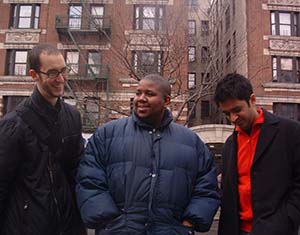
What is it about the chemistry of this trio that makes it special for you?
We recently came back from a tour of Europe and had a great time. Backstage at a festival in Paris, I said “You know why this band is so great on the road? It’s because we’re all such nerds.” [laughs] We love to geek about things like Stockhausen’s Klavierstücke—stuff you wouldn’t think we’d talk about. Everyone is very serious about composition and dealing with ideas. At the same time, as players, we’re pretty intense and bring that fire to the table too. It isn’t just all brains. There’s a lot of muscle to Fieldwork too, which helps push it over the edge. The group features a lot of spontaneity and surprise. It’s all carefully worked on given that the music is very hard—some of the hardest music I have ever played in terms of sheer difficulty, synchronomy, and execution. However, we tried to push ourselves beyond that into a zone beyond the edge of our control so the music comes alive in a way that’s really exciting.
In 2007, you wrote an essay for All About Jazz that stated “I’d like to put the call out to my fellow musicians: let us all vow to put ourselves at maximum creative risk whenever possible.” What motivated you to put that statement out there?
It had to do with what I was hearing from the mainstream of the New York scene, in particular, from the younger players. There’s a real conformity going on and it’s not just in New York either, based on listening to musicians from other places through MySpace and other means. From what I hear, people aren’t challenging themselves that much. They’re largely playing it safe instead of pushing themselves. I felt like I particularly needed to respond to the student culture, because probably the biggest source of jazz musicians now is the music schools. Many who come out of them feel driven to conform. Of course, there are economic pressures for making the choices they do as well. However, the main thing is that their choices don’t seem to be informed by the history of the music. And by “history of the music,” I mean the history of risk taking which is what defines jazz history. It’s one of the main driving forces behind the evolution of the genre. So, I’m not advocating experimentation for its own sake, but advancements that are grounded in the perspective that jazz is inherently oppositional and represents a search for transformation and newness.
What reaction did your essay elicit?
Nothing major, but I guess a lot of people read it. I heard from people who at least nominally agreed with what I said, but it was sort of like when Barack Obama calls for change. Everyone can get with change, right? [laughs] I couldn’t really tell who agreed with me in principle and who would really put it into practice. Calling for change by itself sounds good and everyone can agree with it but you don’t know what effect it will really have. That article was just a blip in the scheme of things. What I’d like to see are more ideas in this music and people who aren’t afraid to express their ideas and try something new. They should also challenge themselves by putting themselves in dialogue with other forms of music outside of jazz, and forms that are outside of music in terms of interdisciplinary structures and methodologies. They should put themselves in dialogue with something radically different from themselves.
You played with Steve Coleman a lot during the early part of your career. How would you describe his influence on you in terms of your willingness to embrace risk?
Steve certainly provides a great example to everyone. And with him, it’s not just about risk, but risk with rigor. He’s not out there guessing. He works his ass off. Steve and Roscoe Mitchell are towering examples of very methodical, yet extremely experimental sensibilities grounded in something larger. It’s not just newness for its own sake. It’s grounded in traditions informed by history. It’s very specific and has a lot of depth to it. Both of them have been extremely influential on me in that regard.
Encapsulate your experience as part of Coleman’s milieu.
It was a great education for me. It exposed me for the first time to the professional level of touring, festivals, and clubs overseas. I also got to work with some of the best musicians of that time, including Gene Lake, Sean Rickman, Reggie Washington, David Gilmore, and Marcus Gilmore, who ended up joining my band. All of them influenced me a lot. Being around them and getting a heavy dose of their sensibilities was very valuable. I learned so much from them. Also, Steve is a real conceptualist with a composerly mentality that likes to deal with esoteric ideas. He often starts with ideas outside of music and finds ways to bring them into the musical domain. I spent a lot of time sitting with him on the tour bus checking out books about mathematics, Egyptology, philosophy of mind, and things about rhythm and specific composers. Steve was really into the esoteric knowledge of Pythagoras, ancient Egyptian mathematics, and astrology and mapping those things into a symbolic musical language. I’m not so concerned with those kinds of mappings, but more interested in something a little more direct and less mediated. We also talked a bit about spirituality, which was a major component for him as well.
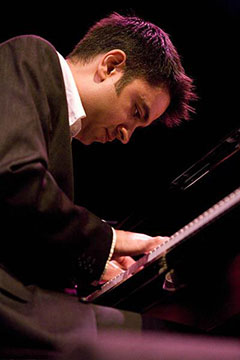
How does spirituality inform what you do?
I’ve had what I would call spiritual experiences playing music and I try to make music that allows those kinds of experiences to happen, but I have no religious agenda or spiritual agenda of that sort. If there is any sort of spiritual tradition that informs what I do, it’s Buddhism, because it puts you more in dialogue with the self and brings you into higher levels of awareness. In general, music itself does that for me in a way that very few other things do. I think particularly because it works on the mind and body in particular ways that are very much in tune with what yoga or meditation does.
You’ve said in previous interviews that your perspective as a person of color in America is fundamental to everything you do and every human interaction you have. You’ve also said it’s frustrating to have people constantly read and overestimate the South Asian influences in your work.
Those influences do permeate my art deeply, but it’s funny to see people understate their role and have others totally overstate it. To me, they’re omnipresent in my work and often in hidden ways. People trained in Carnatic or Hindustani music hear those connections in the rhythmic domain or in terms of how melody is handled. The guitarist Prasanna that I work with in Tirtha plays Carnatic music on guitar and also does fusion projects and thinks my music is more Indian than his. [laughs] He ought to know more than I though. However, when I see American or European critics trying to affirm or deny those connections, it’s usually based on a complete lack of knowledge about Indian music. So, they’re looking for something else. I deal with forms and structures of Indian music and try to bring then into a dialogue with my work and have them inform my compositional process. But I’m not trying to make my work sound like Indian music. The surface of the music doesn’t necessarily sound like Indian music, but at the structural level, it’s very much there in terms of the rhythms, forms, phrasing, and melodies. But you need to know something about the music to understand this. Also, it’s not the entirety of what I do. I claim a wide range of influences as part of who I am. At this point, I just keep putting out the music and that’s its own statement. I now have 10 albums out and they sketch out a certain perspective on all these influences. I hope the music speaks to a certain extent for itself.
You mentioned your new band Tirtha, featuring Prasanna and Nitin Mitta on tabla. Tell me how it came together.
It began in the fall of 2007, just by accident. It was a funny experience in it started with a presenter saying something to me overly apologetically. He said “Now, feel free to say no if you want and I’m sorry if this offends you in any way. How do you feel about working with actual Indian musicians from India?” [laughs] He thought he had to walk on eggshells otherwise I would fly off the handle and have a diva hissy fit. It was also a concern about whether or not asking me would be politically correct. There’s some sort of anxiety around these things which I find humorous. But my response was “Yeah, fine, I’ve done that many times.” The initial idea came through a series of events supported by National Geographic Traveler and the Indian Ministry of Tourism. They were organizing a series of events in Chicago and New York, and I said I would put something special together for the occasion.
I had known Prasanna for a few years and heard his music. I knew he was open to things and thought it would be an interesting encounter if we tried to do something together because he’s a Carnatic musician that grew up in Chennai playing rock, while listening to both Western classical music and heavy metal. He’s also had a serious career in India playing Carnatic- and Hindustani-derived music for film. He’s helped orchestrate stuff for A.R. Rahman and is on the soundtrack for Lagaan, among many other things. At some point nine years ago, he decided he hit a certain wall in that scene and wanted to study Western music seriously, so he took the plunge and moved to Boston to attend the Berklee School of Music. He did a Masters of Composition there. That was the beginning of his experience of living and working in America. He collaborates with a lot of American musicians and does his own fusion-oriented stuff too, so he has a sensibility that’s very modern and urban, yet totally solid in terms of grounding in Indian classical music. He seemed like an ideal person to have an interesting dialogue with.
Nitin Mitta is a great tabla player I’ve seen around in New York doing a lot of Hindustani classical concerts. He’s very young, in his late 20s or early 30s. He came here a few years ago and became the guy everyone called to do everything. So, we formed this group for this occasion, not knowing what would happen. Once we got together to rehearse at my place in the month leading up to it, we realized that it worked much better than any of us anticipated. I think part of it is both Prasanna and I write for the group and specifically choose stuff we feel would be easy enough for us to play but would still involve the structures associated with Indian music that we could flesh out. So, he brings all those melodic nuances and rhythmic cadences to the music I wrote. And it’s embellished by the whole ensemble in a way that really works. It’s very organic. I’m playing very rhythmically with this group to help carry the pulse. A lot of what I do is almost sustained percussive kind of stuff which keeps the rhythmic momentum going, which means Nitin is freed up to play coloristically at times. It’s a dynamic group and we’re pleased with how everything went. It’s now an ongoing thing.

Your jazz influences are well documented, but I’m curious what your electronica and hip-hop influences are.
I listen to a lot of recent stuff like Autechre, but I’m not really thinking about that stuff when I make electronic music. Rather, I’m thinking compositionally, in the same way that I always have. I learned a lot from Mike Ladd about making electronic music and being very choosy about the drum sound and how that ends up being the signifying explosion by creating a certain aesthetic, perspective, and reference point. Mike also turned me on to the Ninja Tune and Warp stuff which I find really interesting.
I grew up with hip-hop just like everyone else, so that’s a big part of who I am. I like stuff all the way from Public Enemy to Aceyalone to M.I.A. to Dizzee Rascal. Some of that music has almost a punk rock orientation in terms of its handmade quality. It means that electronic music can be very meaningful and that’s what I strive for in jazz too. Even if something has a lot of formal complexity, I’m trying to have that handmade quality speak through it so you can hear the human being behind it.
I should also mention that the ‘80s funk-pop stuff like Prince’s 1999 and Michael Jackson’s Thriller were also important for me. I was just thinking about 1999 after I had played Still Life with Commentator for somebody. I realized there was something very connected to 1999, which was one of the best records of that era. It’s a very synthetic album with a lot of soul. Prince found a way to use synthesizers, drum machines, guitars, and voice together and make it a really complete statement that has a lot of personality and vision to it. It’s very layered music and there’s lot to discover on repeated listenings, so it’s not just about electronic music, but the whole history of American music from Hendrix and Nina Simone to pop and rock of the ‘70s and ‘80s—that stuff is probably even more of a driving force for me.
You’ve received an impressive amount of critical acclaim in modern jazz circles—more than anyone I can think of in recent times. How has that translated into career opportunities for you?
What it’s done is make me more part of the conversation about things. I get to meet a lot of people and sit on panels. There’s a certain kind of embrace from the superstructure and it feels like I’ll probably have some role in the history of this music, which is more than I ever expected to happen. That’s an amazing reward for me. Otherwise, I’m able to get through the year making my music. I have some teaching stuff going on too, but I’m not living large by any means. When I started to gain prominence maybe five or six years ago, the health of the scene and industry was dwindling, so I was emerging into a shrinking pool, or getting a larger piece of a smaller pie.
It’s a very transitional moment in the industry in terms of making records. I had the fortune of getting in on the tail end of all of the changes, but now it will be about something else. I read a recent interview with John McLaughlin and he’s now in the same place in the industry as I am in terms of making records. I thought “Everything he said was stuff I said yesterday.” [laughs] We’re all in that position in terms of all bets being off. Anything you thought you knew about dealing with a label has changed. The labels are basically saying “You can make a record if you pay for it. Maybe we’ll license it. Maybe we won’t.” So, people have to find their own resources to make these recordings now. For instance, I’ve written a 35-minute piece for the string quartet Ethel and we’re now trying to figure out how and for whom we can record it.
So, it’s a perilous moment, but live performance won’t die. In a way, it’s a blessing that the emphasis is tipping towards live performance, because that’s what this music is really about. It’s no longer about making money off records, not that I ever have. But things are no longer related to getting support to make records. It’s the reverse. Recordings now end up being an incentive for people to present me as a performer and that’s good because it’s a perspective that draws on what I feel are my strengths. What I have to offer is a live experience of putting music in front of people, putting it in their bodies, and giving them this experience of presence and human action. If I’m able to keep doing that until I’m no longer able to do it, then that would be a certain kind of success.